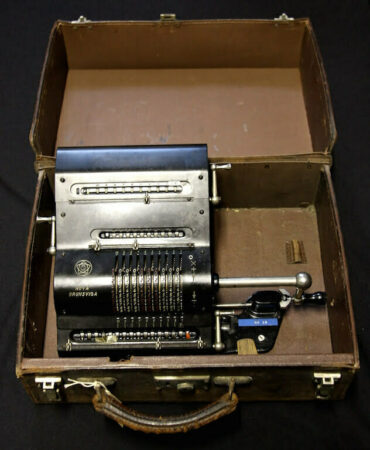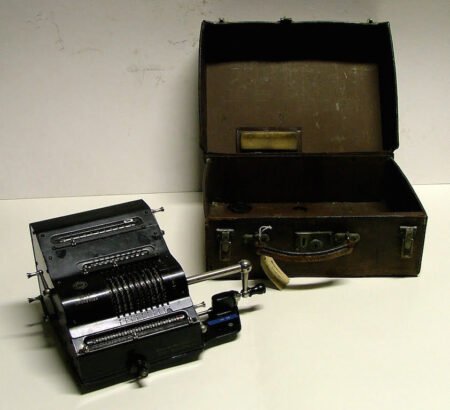Technology Object of the Day – Calculator

DUNUC 3105, instrument, Brunsviga Nova calculator in leather case. Mathematics Collection. Donated to Museum Services in 1995.
The Brunsviga Nova calculator, circa 1920, is entirely mechanical which is typical of computing equipment used in the mid-1920s. Unlike an adding machine which could just do sums, the calculator could also multiply and divide. This is a far cry from the calculators we see in schools today – and even further than the calculator Apps we have on our phones! A series of instructions needed to be followed in order to do any calculation, including pulling levers quickly but smoothly, rotating handles and sliding knobs. For example, to multiply 567 by 32:
- Pull the levers down to 567
- Pull the knob on the large lever handle on the right outwards and rotate once.
- Rest the handle in the claws. Center and lower rows now read 567; top row reads 1.
- Rotate handle once again; center row reads 567 and lower reads 1134. Top row reads 2, noting the number of operations (2 x 567 = 1134).
- Slide the bottom knob to the left to shift the middle number (576) one place, thus multiplying it by 10: 5670.
- Rotate the handle 3 times, thus adding three copies of 5670 to 1134 and obtaining the product, 18144, in the bottom row.

For a video on how the calculator was used, follow this link
Credit: Copyright University of Dundee Museum Services, www.dundee.ac.uk/museum


